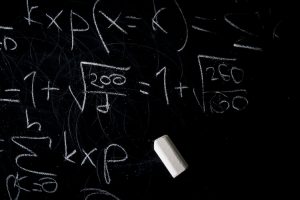
What is the Common Core State Standard?
by Jessica Conlon, Iulia Boboc, and Chris Cullen
You may hear the term CCSS every now and then in regards to your school curriculum. But it is not often explained to students or parents in a way that is easy to understand.
The Common Core State Standard is key to the MEK curriculum, as we help students build foundations for school success. We’ll explain to you what it entails below!
What is the Common Core?
The Common Core State Standards (or CCSS) are a set of high-quality learning goals for K-12 students. Developed in collaboration with educators, administrators, and experts from across the country and around the world, these standards outline the kinds of skills and abilities necessary for a well-rounded education in two major content areas: Mathematics, and English Language Arts/Literacy (or ELA).
In New Jersey, the State Board of Education uses the Common Core standards to help build the New Jersey State Learning Standards (NJSLS), which all public schools are required to implement. The current NJSLS in Mathematics and in English Language Arts draw directly from the Common Core standards.
State Standards for Mathematics

The NJSLS Mathematics standards provide a road map for educators to help students develop mathematical skills. As students grow older, they learn more about mathematical operations and problem-solving methods, progressively building on the skills developed in earlier grades.
The NJSLS outlines grade-appropriate skills and masteries, as well as grade-appropriate problem-solving methods and vocabulary.
For K-8 students, the NJSLS is divided into grade-specific standards. At the high school level, standards are instead divided among specific content areas: Number and Quantity; Algebra; Functions; Geometry; Modeling; and Statistics and Probability.
Third and Fourth Grade Mathematics
Students entering third grade are experts at two-digit addition and subtraction. They are fluent in using the place value system to solve problems.
Now they begin the next chapter of their mathematical understanding with brand-new operations: multiplication and division. Multiplication and division are crucial foundational skills that students will use throughout their education and throughout their life beyond high school, and an early understanding of one-digit multiplication and simple division is necessary for success with more difficult topics.
Additionally, students begin to learn about fractions as parts of a whole and as numbers between 0 and 1. A first look at area and perimeter expands students’ understanding of basic geometry.
Once students understand the concept of fractions, they are ready to begin basic operations with fractions. Fourth grade students review fractions and begin to discuss the addition and subtraction of fractions.
They understand that a fraction such as ¾ can be made by adding three quarters together (¼+¼+¼), and they begin to understand basic equivalent fractions, such as ½ and 3/6.
Fourth graders refine their multiplication and division skills, and are introduced to decimal notation as an alternate way of writing fractions with denominators of 10 or 100. They are also introduced to angles, a necessary component to classifying types of shapes.
Fifth and Sixth Grade Mathematics
As students begin middle school, they continue to refine their calculation skills with the four operations and use them to solve complicated word problems.
Fifth graders combine their knowledge of basic addition and subtraction of fractions and their understanding of equivalent fractions. With this combination, they begin to add and subtract fractions with unlike denominators. They are also introduced to multiplication and division with fractions.
They expand on their geometric knowledge to begin discussing volume, or how much space 3D shapes take up in the plane, and they get an introduction to graphing by representing simple ordered pairs in the coordinate plane.
In sixth grade, students take their first step towards understanding expressions and equations. They are introduced to variables that stand in for unknown numbers, use exponents to represent repeated multiplication, solve one-step equations to find variables, and begin to learn basic ratio and statistical concepts.
Students also learn about the negative number system, where negative numbers are the opposite of positive numbers–an important concept for many basic algebraic operations and thought experiments.
Seventh and Eighth Grade Mathematic
Students in 7th and 8th grade learn their first algebraic concepts in earnest, in preparation for Algebra 1 courses in high school (or even earlier for advanced students).
In seventh grade students continue to use ratios and proportions to solve complicated word problems, and expand their prior knowledge of the four operations to perform operations with negative numbers. They become experts at solving two-step algebraic equations and at translating descriptions and word problems into simple algebraic equations, find the volume of composed shapes (which are made up of two or more simple shapes), and begin to calculate the probability of simple and compound events.
In eighth grade, students focus on three key areas: expressions and equations, functions, and analyzing two- and three-dimensional figures. Students are formally introduced to functions and to linear equations, drawing on prior knowledge of one-variable equations and proportional relationships.
Students learn about properties of exponents, about the difference between rational and irrational numbers, and how to solve systems of linear equations–all topics that will prove integral to their understanding of high school algebra and other advanced math courses. Additionally, eighth graders take a deeper look at volume, including the volume of cylinders, cones, and spheres, and are introduced to the Pythagorean Theorem, preparing them for advanced Geometry courses.
State Standards for English

Unlike the Mathematics standards, the ELA standards are divided into four “strands”: Reading, Writing, Speaking and Listening, and Language. Each strand has a series of anchor standards outlining the types of skills students should practice and master over the course of their K-12 education. The anchor standards are used to develop grade-specific standards, which can then help develop a grade-specific curriculum.
Generally, English students are not learning different or brand-new skills every year. Instead, students refine their existing skills of reading comprehension and writing ability, and expand their existing knowledge of grammar and other standard English conventions.
The different strands describe broad categories of skills which students need to master to become effective communicators.
- Reading: outlines reading comprehension skills and strategies for analyzing the written word
- Writing: outlines writing-based skills, such as writing clear and coherent pieces, establishing claims with supporting details, and rereading and revising work
- Speaking and Listening: concerned with effective verbal communication strategies in a variety of contexts, such as oral presentations or group discussions
- Language: covers the conventions of standard English, such as grammar, punctuation, spelling, and vocabulary acquisition
Fourth and Fifth Grade Reading and Writing Standards
Fourth and fifth grade students are familiar with the mechanics of how to read and write; they can sound out unfamiliar words, use reference materials to check their spelling, and produce coherent sentences with reasonably accurate grammar. Now that the basics are mastered, students begin to delve deeper into how to read analytically, and how to write effectively.
In fourth and fifth grade, students begin to read critically. They recognize main ideas from informational texts and themes from literature, and can provide summaries, referencing details and examples from the text. Students are able to compare and contrast individuals and events in a single text and begin to compare and contrast two related texts, such as two stories in the same genre or two articles on the same topic. They can also explain how an author uses evidence to support specific claims in a text.
Students at the fourth and fifth grade levels are also expected to write structured pieces, such as opinion pieces or informational texts. They begin to conduct short research projects at this time, drawing information from several sources, and integrating the information in their written work without plagiarism.
Fourth and Fifth Grade Language and Speaking and Listening Standards
By fourth grade, students are already familiar with the basic conventions of punctuation and grammar, simple verb tenses, and the parts of speech. They expand that knowledge throughout fourth grade and into fifth grade, where relative pronouns (who, whose, whom, which, that) and relative adverbs (where, when, why) are introduced.
Fourth grade students begin to use the progressive verb tenses (I was walking; I am walking; I will be walking) and modal auxiliaries like can and may. Fifth grade students learn the perfect tenses (I had walked; I have walked; I will have walked) and are expected to understand and explain the purpose of conjunctions, prepositions, and interjections. They can choose punctuation, words, and sentence structure for effective communication, understand simple similes and metaphors, and use context clues to learn new vocabulary.
Fourth and fifth graders also participate in more group discussions and make more presentations than students in lower grades. In group discussions, they should be able to express their own ideas clearly and link their responses to the ideas expressed by other students.
Sixth and Seventh Grade Reading and Writing Standards
In sixth grade and beyond, reading comprehension skills go beyond simple understanding and into the realm of analysis. Students not only compare elements within a story (such as comparing two characters), but they also begin to look at how different elements affect one another, such as how setting shapes characters or how characters shape plot.
They begin to look at how an authors’ specific word choices impact meaning and tone, compare texts to multimedia versions of the text, and begin to question whether an author’s claims are supported by relevant evidence and sound reasoning. This deeper analysis develops students’ critical thinking skills and prepares them for the types of questions commonly seen in high school and higher education.
Students at the sixth and seventh grade level also continue to refine their writing skills. In addition to producing coherent pieces with clearly stated topics and relevant evidence, students begin to establish a formal writing style, eliminating informal language and conventions. Students also begin to analyze the credibility of the sources they use when writing, and learn how to cite these sources properly.
Sixth and Seventh Grade Language and Speaking and Listening Standards
By the end of seventh grade, students have a good working knowledge of standard grammar and usage. They are able to use pronouns in the proper case and correct vague or incorrect pronouns, explain the function of specific phrases and clauses, and choose between simple, compound, complex, and compound-complex sentences to make effective points. They can eliminate redundancy in their writing and maintain a formal tone where appropriate.
Students also bring their burgeoning analytical skills to their vocabulary by looking at more advanced figurative language (such as personification and allusions) and beginning to differentiate between a word’s denotations (its literal definition) and its connotations (the associations a word has).
Students are also expected to bring a more formal style to group discussions and individual presentations. They take a more active role in discussions, asking one another questions and responding to each other with more relevant observations. They not only recall information presented orally, but also begin to interpret and analyze this information.
Eighth Grade Reading and Writing Standards
On the cusp of high school, eighth grade students should be mastering the skills learned in earlier grades. Students at this level are able to cite the most relevant textual evidence when analyzing literature and to understand analogies and allusions to other texts. They begin to notice dramatic irony and themes and archetypes from myths and classical texts, identifying patterns in stories that are as old as storytelling itself. When reading informational texts, students recognize the difference between relevant and irrelevant evidence, consider the best possible medium to present particular information, and analyze two or more sources that provide conflicting information.
Students write much more sophisticated pieces. They vary their language and sentence structure to engage reader interest. When developing their claims, students are expected to acknowledge alternate or opposing claims such as other possible analyses of a text, and to make their claim distinct. The reasoning is tighter, the evidence stronger, and the writing more sophisticated than in previous years.
Eighth Grade Language and Speaking and Listening Standards
Now masters of standard English conventions, eighth grade students begin to study verbs in greater detail. They review and analyze verbs such as gerunds, participles, and infinitives. Classes discuss passive and active verb voices and use verb moods to achieve effects such as describing uncertainty or making demands. Students learn more advanced vocabulary both in and outside of the classroom, and their critical thinking skills allow them to interpret puns and verbal irony.
Finally, students apply critical thinking more closely to verbal communication. Students analyze why information is presented in certain media, and begin looking for a speaker’s motives (such as a commercial or political motive). They continue to identify irrelevant evidence in a speaker’s argument, and when in group discussions, they justify their own opinions, modifying their views if necessary based on others’ comments.
Ninth and Tenth Grade Reading and Writing Standards
As freshmen brand new to high school, 9th graders are expected more than ever to develop sharp critical thinking skills in order to properly formulate their own opinions and support them with sound logic and evidence in writing and speech. Students strengthen these skills further throughout 10th grade.
The 9th and 10th grade curriculums reflect this evolution into high school by placing greater focus on analysis of rhetorical language and the purpose behind an author’s argument. Students begin studying tests from other cultures, beginning to deconstruct how an author’s experiences and past influence a text. The author’s viewpoint, the structural progression of her argument, and the logic behind it become key aspects of analysis; students also move on to study longer texts, placing emphasis on the development of characters and the impact of precise word choice within a text.
This curriculum ensures that all freshmen and sophomore students can analyze arguments, identify rhetorical choices, and are able to use precise language to navigate a dynamic literary (and social) landscape. Students are required to support their inferences and interpretations with evidence and logic- a skill that they will use for the remainder of their academic, and working, lives.
CCSS and MEK
MEK courses are aligned with Common Core State Standards to ensure students are headed to success! You can read more about how our MEK Learning Circles and SAT Core courses are most directly aligned to the Common Core. Plus, you’ll learn how to get started toward success in the following blog posts:
MEK Learning Circles (MLC) – Grades 4-8



